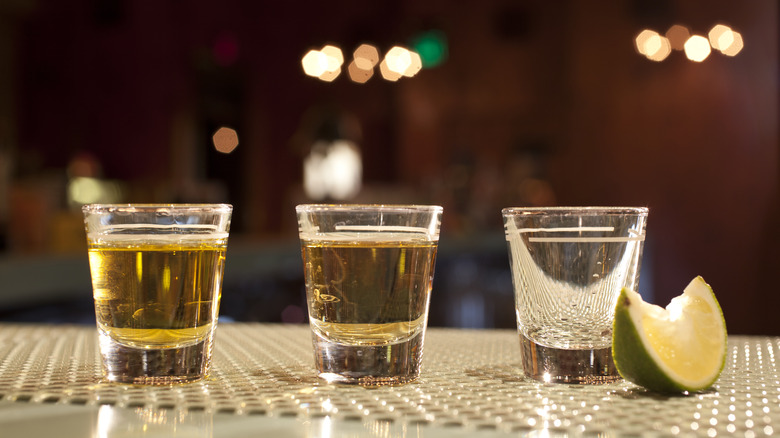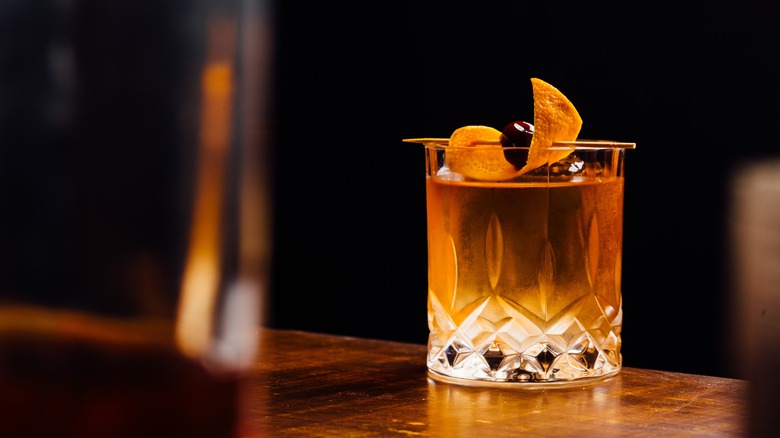What's The Difference Between Añejo And Extra Añejo Tequila?
Neat, on the rocks, or in a spicy margarita — people love tequila for its versatility and variety. It tastes great straight up or shaken in a cocktail. And, like a fine wine, tequila has a range of flavors and aromas that improve over time. When it comes to aging, añejo and extra añejo tequilas take the longest to mature. So, what's the difference?
Añejo, meaning aged or vintage in Spanish, typically ages in a vat or oak barrel for one to three years. The longer it sits in the barrel, the deeper the tequila's flavors become, increasing its oakiness and developing notes of wood, vanilla, and caramel. Unlike its unaged, clear counterparts, añejo has a darker, amber hue, closer to that of a whiskey.
Extra añejo tequila stays in a vat or oak barrel for even longer, with a minimum aging time of three years or more. As the tequila ages, it develops more intense flavors, such as baking spices, tobacco, and leather. This aging process requires a high level of craftsmanship, which means a higher price tag. It also costs more because distilleries reserve their best batches for longer-aged tequilas. These bottles have become coveted collector's items, similar to rare cognac or Scotch.
The best ways to enjoy añejo and extra añejo tequila
Don't make the faux pas of mixing añejo or extra añejo tequilas into a batch of margaritas. The complexity of these premium tequilas would be wasted. If you want to really appreciate tequila, sipping it neat is the best way to enjoy the intricate flavors of both. Longer-aged tequilas shine when served on the rocks with a splash of fresh lime juice or club soda.
If you're in the mood for a cocktail, though, aged tequilas also make an ideal base for strong drinks like a tequila smash. Shake up your tequila of choice with orange liqueur, agave nectar, and fresh lemon juice. Pour it into a rocks glass with crushed ice and garnish with a sprig of mint. The refreshing citrus notes of the orange liqueur and lemon amplify the fruity aromas in aged tequilas.
Or, try a chocolatey, mole-inspired drink to highlight Mexico's premium añejo. This spicy-sweet twist on an old fashioned cocktail combines aged tequila, agave syrup, and an orange peel garnish. Swap the Angostura for habanero and chocolate bitters; the spiciness offsets the rich chocolate notes. For added smokiness, flame an orange peel before serving. Salud!


